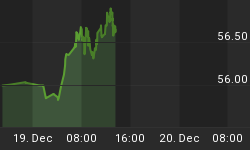China's central bank said in a statement it will allow its banks to import and export more gold as part of a program to push forward the development of the country's market in the precious metal. This is part of the on-going effort to further liberalize the gold market broaden gold's appeal throughout China. China has long been unable to fully explore gold demand. This is another step along that road.

The People's Bank of China's agents has and we believe will, continue buying gold for the country's reserves, slowly but surely. With local production of gold being taken up locally, [whether for the central bank or local gold market remains to be seen] the emphasis is pointing six ways: -
- The first is to narrower spreads and more liquidity in the gold market.
- The second is for an easier access to gold by new Chinese investors across the country.
- In turn, this will allow the number of market professionals to increase.
- With a greater number of dealers and narrower spreads, we expect a rapid need to expand inventory so as to service a country-wide market.
- The more this market develops, the more significant its impact on the gold market and the gold price.
- Please note that this is not simply developing a broad country-wide gold market, but accommodating a burgeoning number of clients.
How big can the Chinese gold market get?
Growth figures coming out of China are astounding. Even the BMW factory in Germany cannot keep up with the demand from newly enriched middle class Chinese. The middle class there is rising in both number and percentage terms dramatically, as this nation of 1.4 billion people is developing on every front. Their disposable income is rising faster than even they imagined. Historically they are a nation of savers so it is not surprising that the Chinese government is encouraging investment in gold. The last we heard, the average Chinese saver saves up to 40% of his income. To date he has been largely confined to bank deposits, as he is only now getting familiar with the Chinese Stock Exchanges. The volatility of the Stock Exchange tends to deter the new prudent investor. Gold is seen in a better light than the Stock Exchange.

The rest of Asia
Add to this the fact that India and the rest of Asia have always loved gold. In fact from Greece eastwards gold is valued not only as a good store of wealth, but as liquid money. They are now finding that they can afford it. The three most populous regions of the world are China, India and Indonesia. Add peripheral regions and you have more than half the world's population getting richer by the day!
Rising Demand
In the past few weeks, physical bullion demand in the emerging world has come back to life. We have noted the dominance of the London bullion market, the hub of the physical gold world, which services the global physical gold market.
In Turkey July saw a jump of nearly 40% in gold imports. Indications are that scrap sales of gold are drying up and there is a need for dealers to import gold now. In 2009, Turkish gold imports fell to 37.6t from 165.9t in 2008. Turkey is the world's third-largest gold consumer and the world's largest jewelry exporter with markets in both mature and emerging economies. As such, Turkey is a good barometer for global gold jewelry demand. In the Middle East good signs of a recovery in the demand for 24 carat gold are being seen.
How big an impact will Asia have on the gold price for the rest of 2010?
The potential investment coming from Asia surprised even us…Subscribers only
To Subscribe please go to www.GoldForecaster.com or www.SilverForecaster.com















